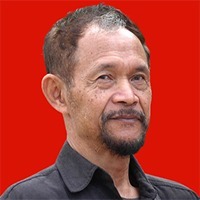Warfare
Tuesday, October 29, 2019
arsip tempo : 171408760791.

LIKE football matches, warfare has an aesthetic—for some reason. At the least, it is photogenic, even (or because) of its brutality. In Robert Capa’s famous photography of the Spanish Civil War and James Nachtwey’s of Kosovo—or in the fictitious scenes of Game of Thrones—pictures depict a dark realism, yet at the same time are fascinating. In Indonesia, this does not surprise us. In shadow play performances, in the h
...
Subscribe to continue reading.
We craft news with stories.
 For the benefits of subscribing to Digital Tempo, See More
For the benefits of subscribing to Digital Tempo, See More








